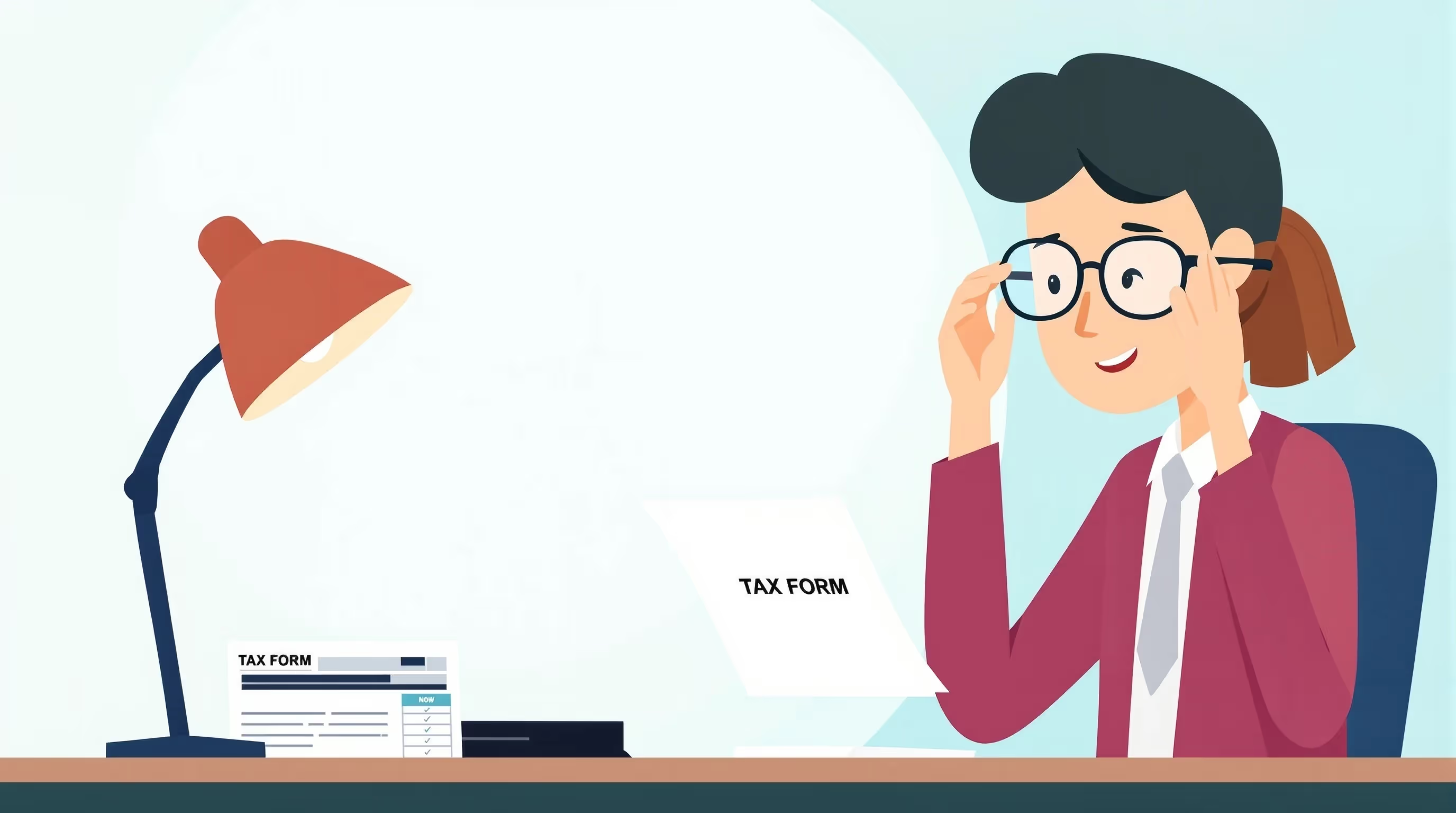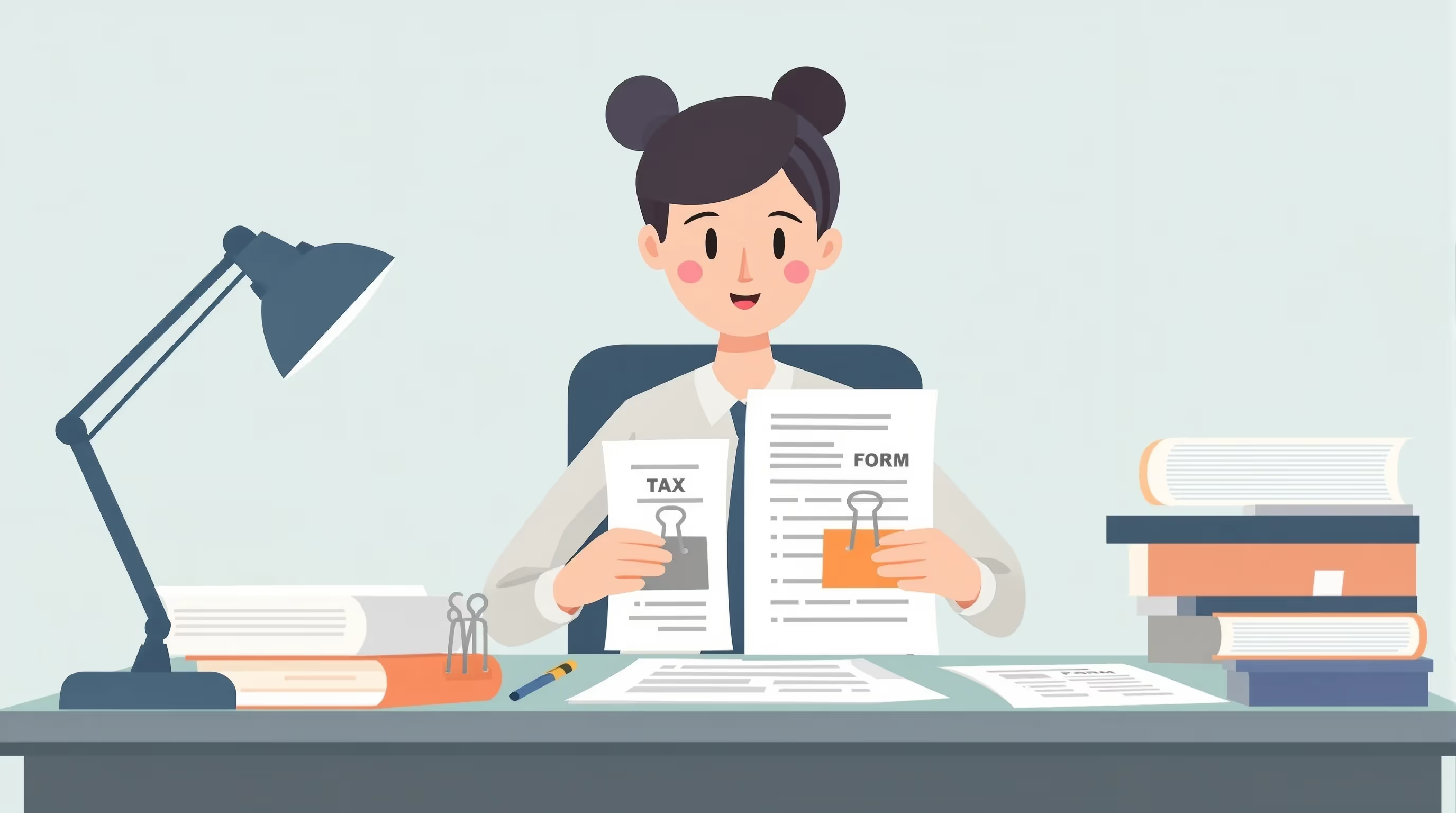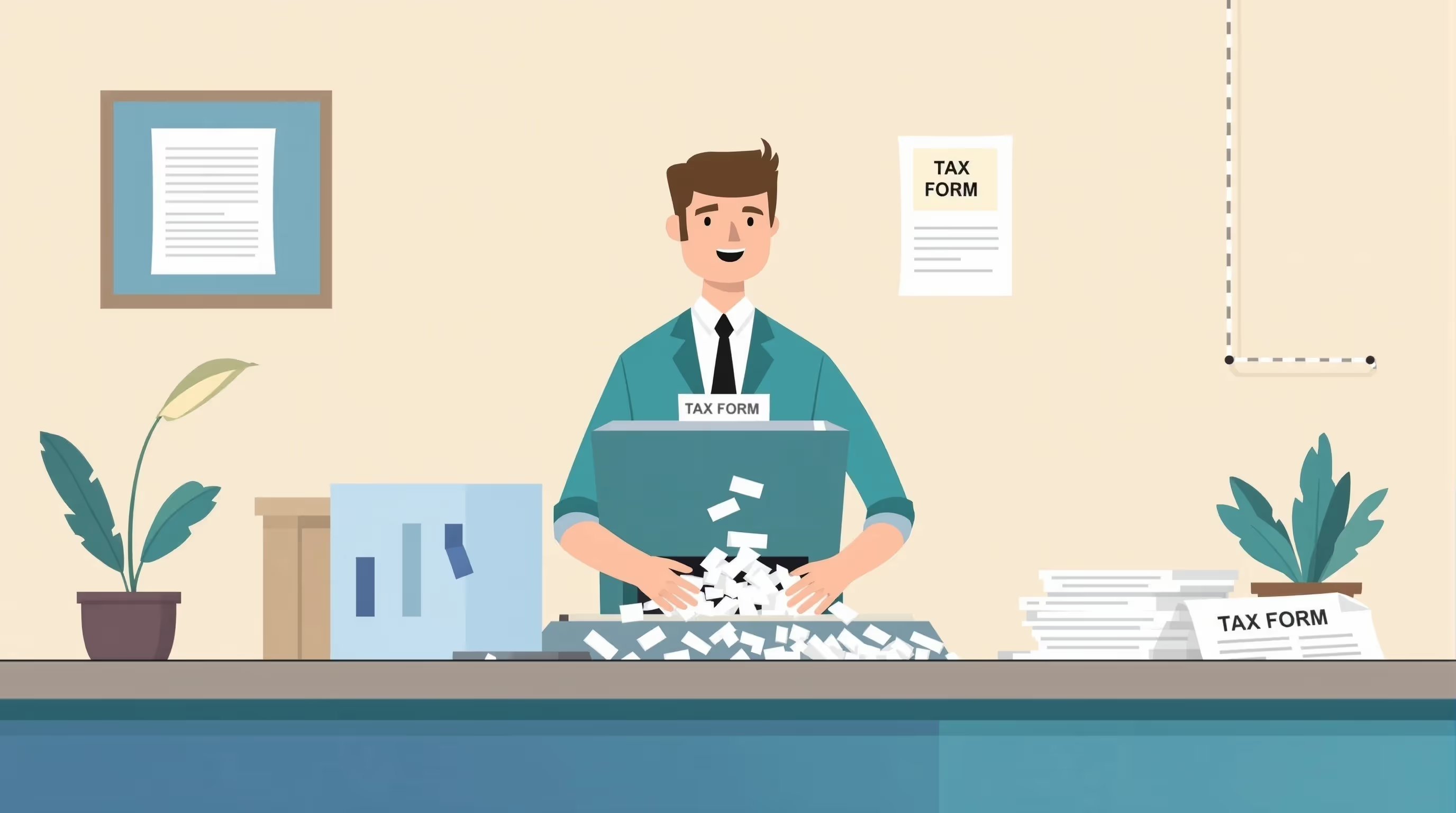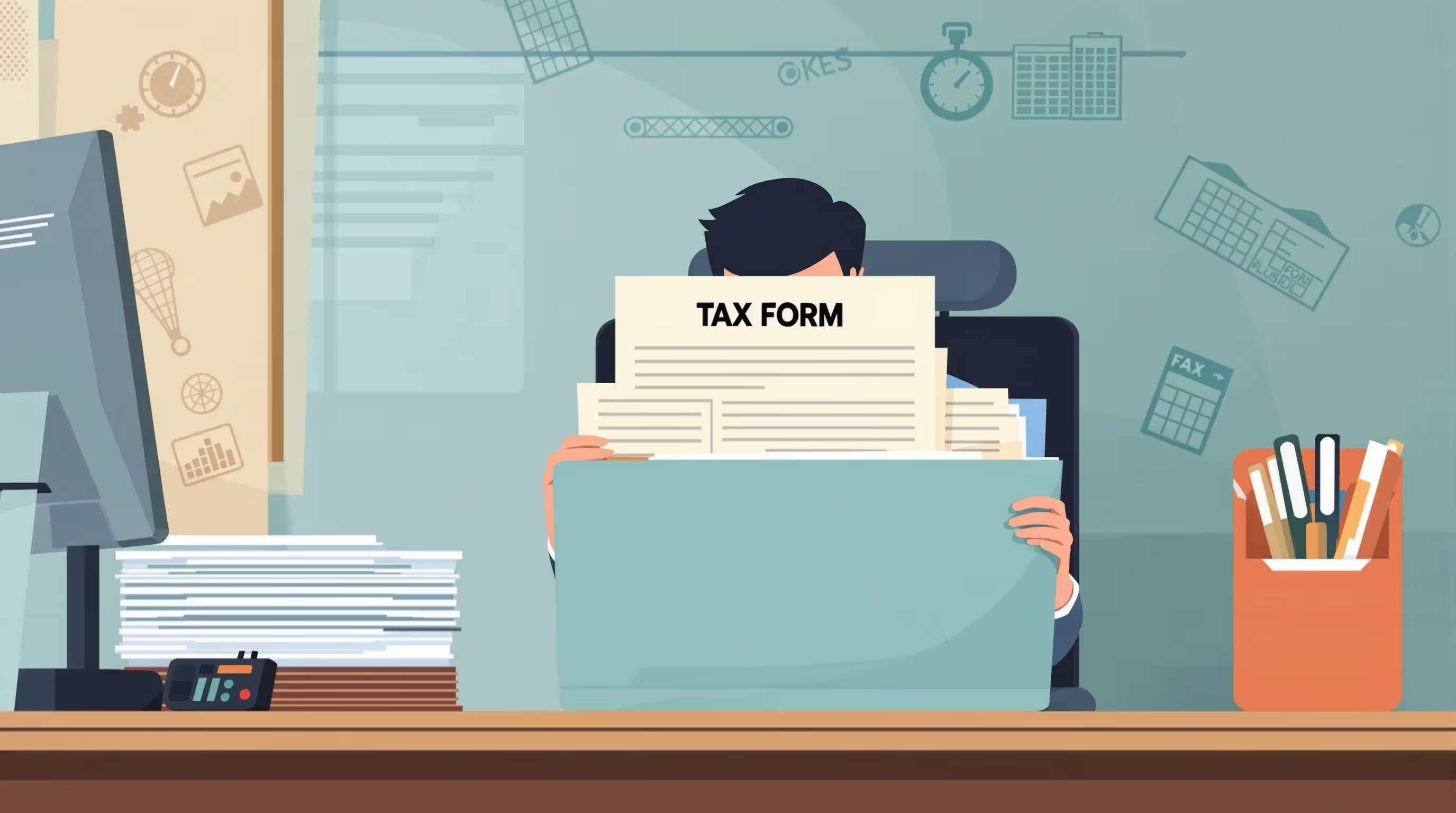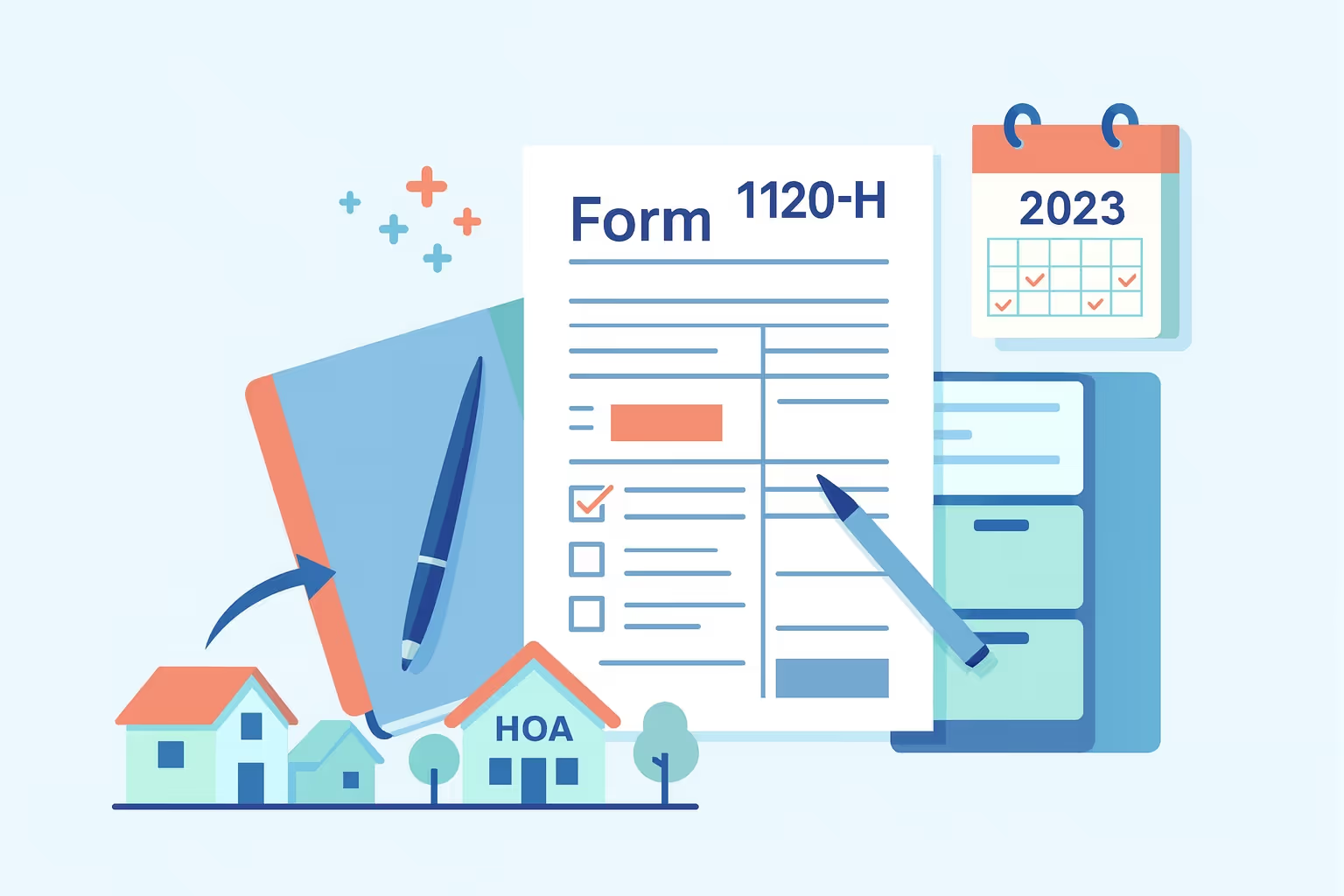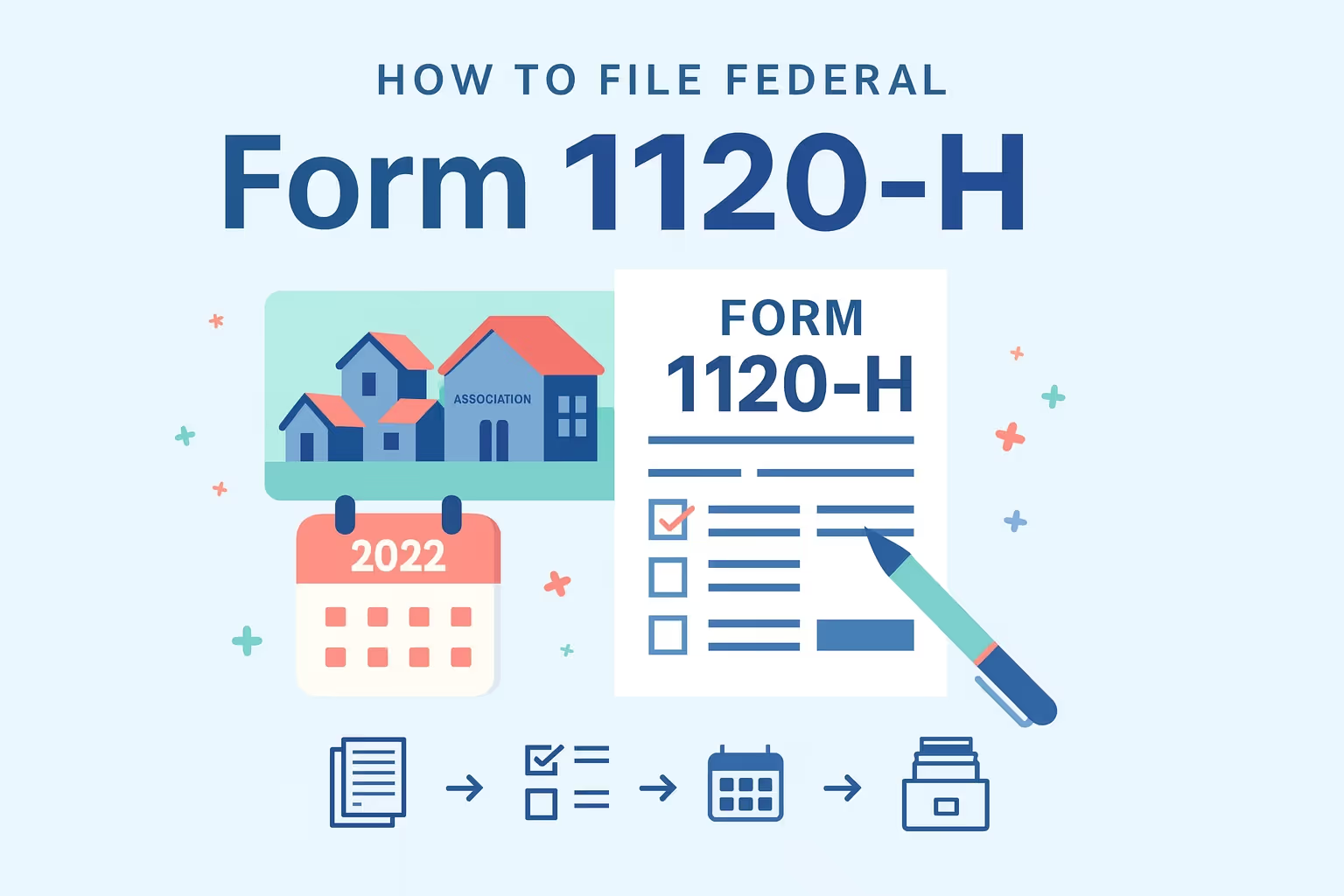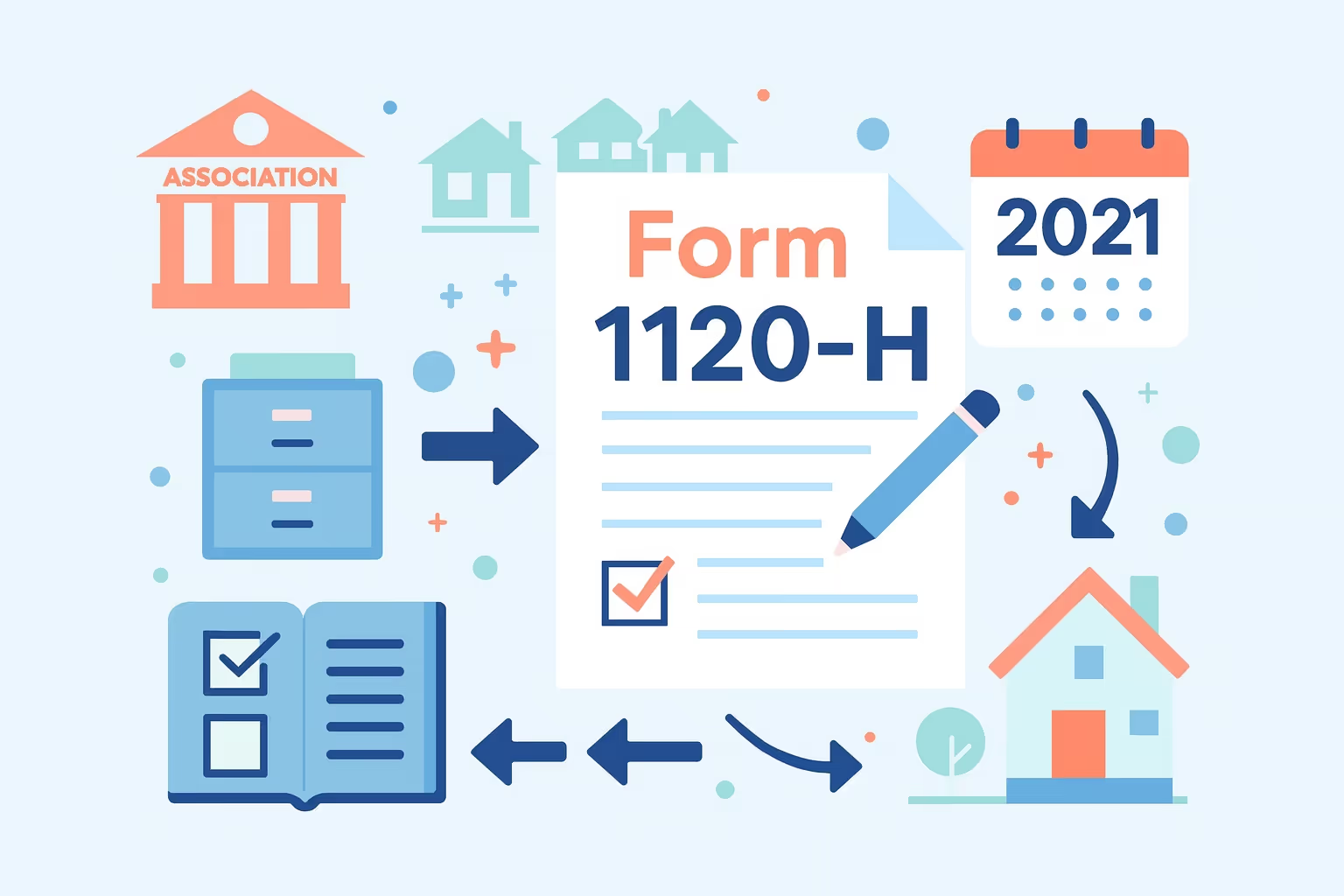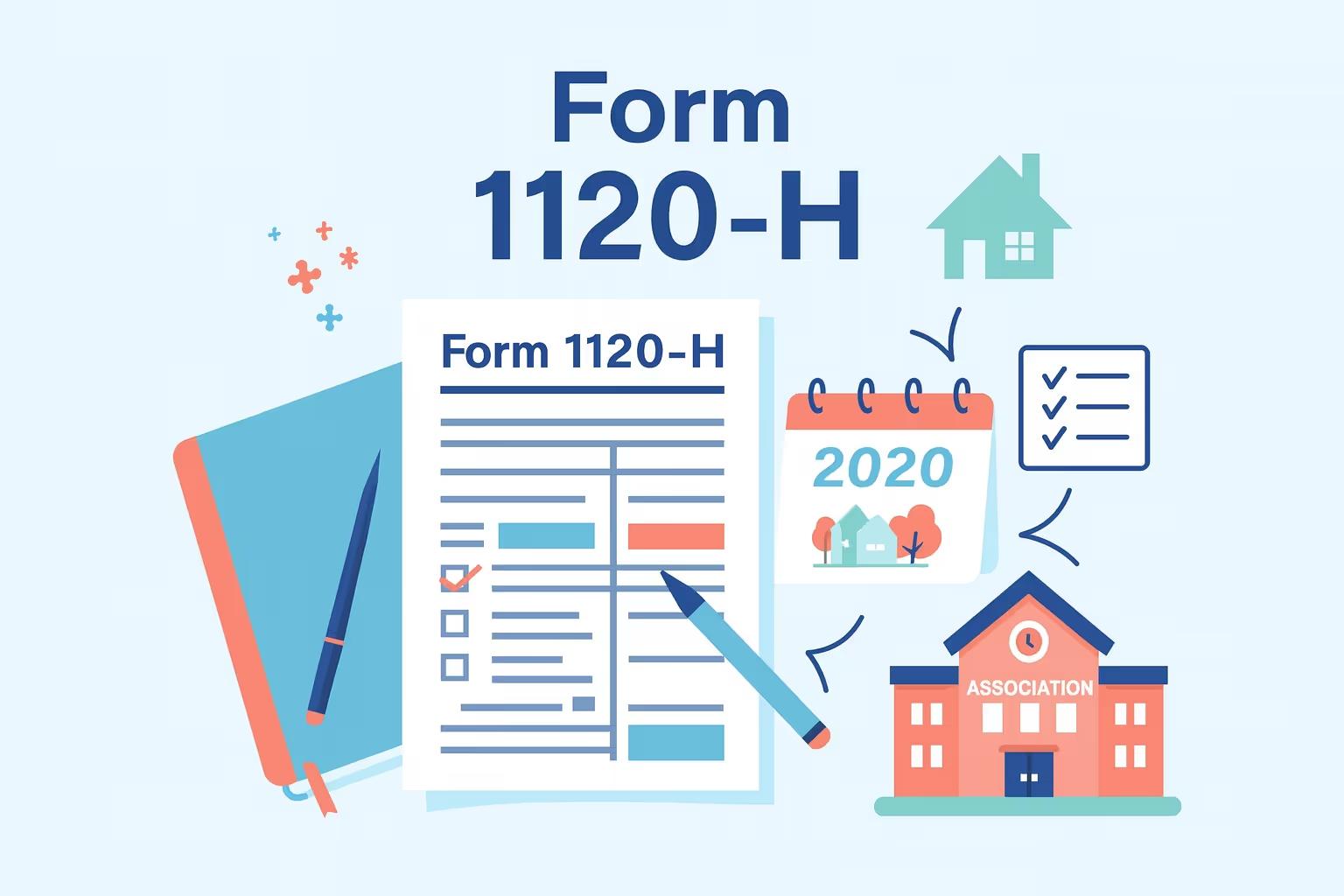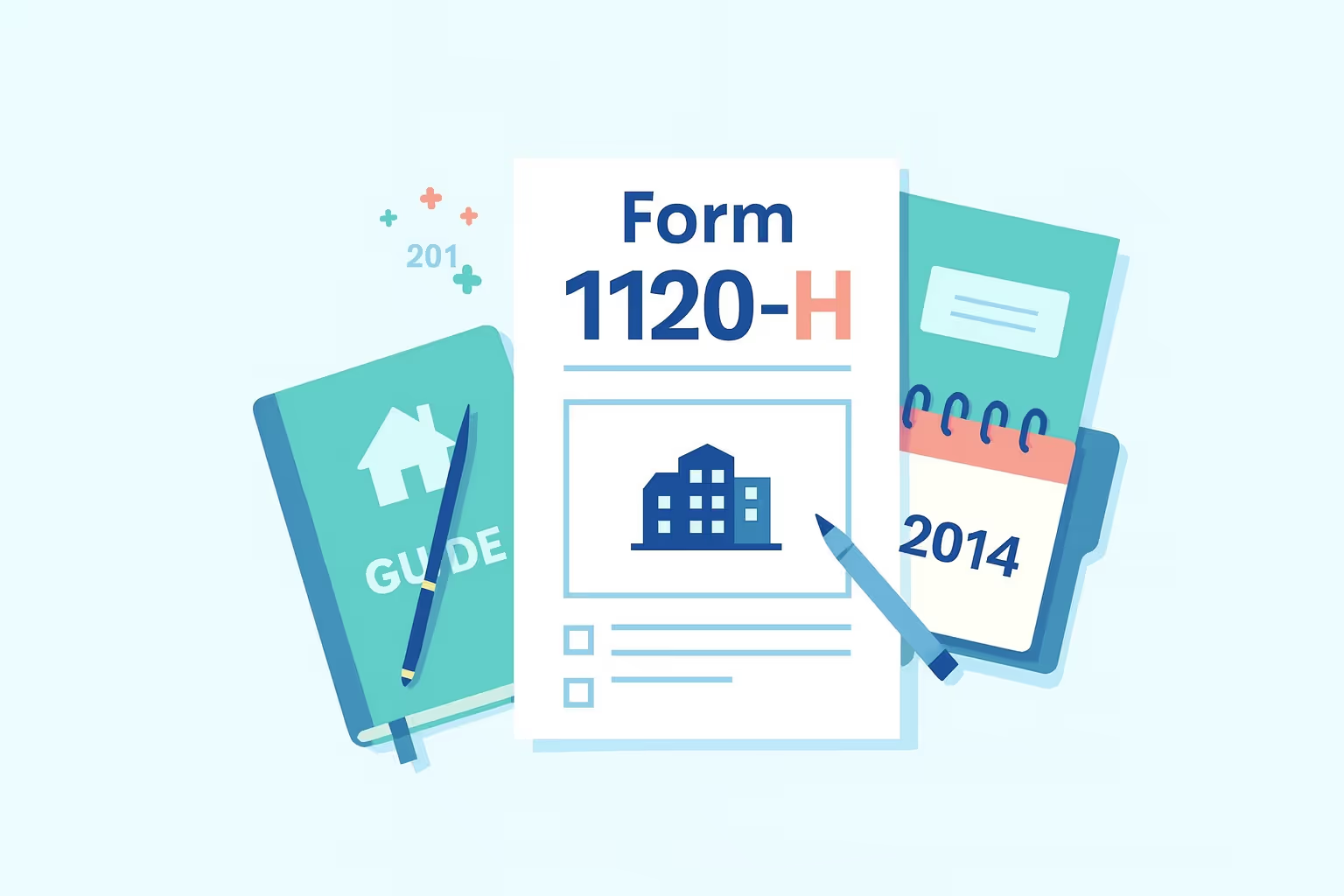Form 1120-H 2013 Instructions and Filing Requirements

Filing Form 1120-H for the 2013 tax year is a necessary step for any homeowners’ association that must submit an annual income tax return under Internal Revenue Code Section 528. This form allows qualifying associations to report the association’s gross income, claim applicable tax benefits, and exclude exempt function income when they meet the eligibility requirements. Associations maintain compliance and reduce filing errors by following official Internal Revenue Service guidelines.
Form 1120-H serves as a corporate income tax return for condominium management associations, residential real estate associations, and timeshare associations. These entities must demonstrate that a substantial portion of their association property and total expenditures are allocated to community maintenance and shared services. Accurate filing ensures the association separates exempt function income, such as membership dues and fees, from taxable revenue and calculates income correctly for the tax year.
This guide focuses on the applicable tax law for 2013 and provides clear instructions on preparing, filing, and reviewing your tax return. Each section explains every step clearly to assist filers unfamiliar with corporate reporting requirements. The official 2013 version is available in Instructions for Form 1120-H (2013).
Understanding Homeowners’ Associations and Section 528
Homeowners' associations (HOAs) oversee shared communities, including condominiums, subdivisions, and timeshares. They manage common areas, uphold property standards, and ensure that membership dues support ongoing maintenance and upkeep of the property. Filing Form 1120-H for the 2013 tax year allows qualifying associations to separate exempt function income from taxable income under federal tax law.
Section 528 of the Internal Revenue Code offers a simplified reporting election. Associations that meet its requirements may exclude exempt function income, including membership fees, assessments, and property-related charges, from taxable income. This provision applies to organizations serving the collective interests of their members, rather than private shareholders, ensuring equitable tax treatment for community-based operations.
To qualify for this election, an association must satisfy three specific criteria established under tax law. These requirements are designed to verify that the association’s income and expenditures are consistent with its community purpose and not intended for private gain. Associations that fail to meet these standards must file a regular corporate income tax return, which may result in changes to their tax liability. The eligibility tests are as follows:
- 60% Income Test: At least 60% of the association’s gross income must consist of exempt function income derived from membership dues, assessments, or fees.
- 90% Expenditure Test: A minimum of 90% of total expenditures must be devoted to acquiring, building, managing, maintaining, or caring for association property.
- No Private Benefit Rule: No portion of the association’s net earnings may inure to the benefit of any private shareholder or individual.
Meeting these criteria confirms the association’s intent to operate for community benefit and allows it to claim certain tax benefits under Section 528. Organizations that meet these conditions may reduce administrative burdens and simplify their filing obligations through Form 1120-H. Establishing eligibility is the first step toward accurate reporting and compliance with Internal Revenue Service requirements for the designated tax year.
Exempt Income and Gross Income Reporting
Understanding the interaction between exempt and taxable income is essential for any homeowners' association filing Form 1120-H for the 2013 tax year. Proper classification of income allows the organization to meet federal reporting standards and maintain accurate tax reporting.
Exempt function income represents the portion of gross income derived from membership dues, assessments, and fees collected to manage and maintain association property. These funds support services that benefit members and sustain the community’s shared assets.
Proper documentation allows associations to exclude exempt function income from taxable income, thereby reducing the association's overall tax liability and presenting its actual financial position. Maintaining precise records ensures continued eligibility for this tax treatment.
Exempt function income covers revenue from daily operations that serve members’ collective interests, such as maintaining common areas, repairing shared facilities, and funding community services. Non-exempt income arises from activities unrelated to community management, including investment interest, rental income from non-members, or gains from the sale of assets.
- Membership Dues and Fees: These payments, made by property owners, provide funding for association services and the upkeep of shared facilities.
- Special Assessments: These charges are collected from members to cover significant repairs, capital improvements, or essential safety upgrades within the community.
- Excess Membership Dues: These represent unused funds that the association may carry forward to a subsequent tax year or apply as a credit toward future expenses.
- Interest Income: This includes earnings generated from savings accounts or other investment vehicles held by the association, which are generally taxable unless derived from exempt sources.
- Tax-Exempt Interest Received: This refers to interest earned from federally tax-exempt securities, which must still be reported on the association’s return even though it is not subject to federal income tax.
- Other Non-Exempt Income: This category encompasses revenue generated from renting facilities to non-members or providing services that are unrelated to the association’s exempt purposes.
The Internal Revenue Service provides clear definitions and examples that assist associations in determining which income sources qualify for exclusion under Section 528. The official guidelines for the 2013 filing year are available in the IRS publication Instructions for Form 1120-H (2013).
Establishing a consistent classification process helps ensure that only non-exempt income is included in taxable net income. Proper documentation supports the exclusion of exempt function income, reflecting the association’s commitment to transparency in reporting. By maintaining accurate records, associations strengthen their compliance position and simplify the preparation of future filings with the Internal Revenue Service.
Filing Deadline and Form 1120-H Requirements
Homeowners’ associations filing Form 1120-H for the 2013 tax year must follow specific timing, reporting, and payment requirements established by the Internal Revenue Service. Adhering to the correct filing deadline and completing all required components ensures full compliance with federal tax law.
Understanding the relationship between the association’s tax year, filing dates, and applicable tax credits is essential for accurate return preparation. Careful attention to these details helps minimize errors, avoid late submissions, and clarify total tax obligations for the reporting period.
- Filing Deadline: Calendar-year associations must file their tax return by March 15, 2014. If the due date falls on a weekend or a legal holiday, the deadline moves to the next business day.
- Form Versions: Associations must use the correct version of Form 1120-H that corresponds with their specific tax year. Outdated or incorrect forms cause processing delays and lead to errors in tax calculations.
- Payment Requirements: Associations must pay the total tax due by the filing deadline and ensure that all applicable amounts are included on the return. Payments must include any income tax withheld and estimated tax paid during the year.
- Tax Credits: Qualifying associations may claim credits such as the Low-Income Housing Credit, New Markets Credit, or Qualified Electric Vehicle Credit. Each credit must meet federal tax law requirements, and filers must fully document each claim.
- Tax Liability: The total tax owed is determined by multiplying taxable income by the applicable rate. Condominium and residential real estate associations apply a 30% rate, while timeshare associations use a 32% rate.
- Extension Requests: Associations unable to file by the original deadline may request an extension by submitting IRS Form 7004, the Automatic Extension Application. The extension grants six additional months to file, but all payments remain due by the initial deadline to avoid interest charges.
Adhering to these requirements demonstrates compliance and strengthens the association’s reporting accuracy. Preparing early, confirming payment records, and applying eligible tax credits help maintain consistency across filings. With key dates and obligations established, the next step is to complete the form accurately using a structured, step-by-step process.
File Form 1120-H: Step-by-Step Walkthrough
Completing Form 1120-H for the 2013 tax year requires careful attention to each section to ensure full compliance with Internal Revenue Code Section 528. The process begins with gathering the correct documents and ends with verifying totals before submission. Each step must reflect accurate figures for income, deductions, and payments to confirm the association’s actual financial position. Following a precise sequence minimizes errors and ensures accurate reporting in accordance with federal tax law.
Step 1: Gather All Required Documentation
Collect all financial statements and records relevant to the association’s tax year before completing the return. Include the employer identification number, income statements, balance sheets, and supporting documentation for exempt and non-exempt income. Associations must retain proof of estimated tax payments, real estate taxes, and any tax credits claimed, such as the New Markets Credit or Low-Income Housing Credit. Organized records ensure each figure on the tax return can be substantiated if reviewed by the Internal Revenue Service.
Step 2: Complete Header Information
Enter the association’s legal name, current address, and employer identification number in the appropriate spaces. Verify that the tax year displayed corresponds to the 2013 filing year. Indicate whether the association uses a calendar or a fiscal year to determine deadlines accurately. Confirm that all details match those previously filed to maintain consistency across tax records.
Step 3: Check Applicable Boxes
Mark boxes to identify changes or special conditions that affect the return. Standard selections include final return, amended return, name change, or address change. Associations that ceased operations or restructured during the year must select the appropriate designation. Review each checkbox to confirm that no key updates are omitted from the filing.
Step 4: Complete Qualification Section (Items A–E)
Provide information confirming the association’s eligibility under Section 528. Report the type of association, total exempt function income, and total expenditures for the tax year. Include any tax-exempt interest received and verify that total expenditures meet the 90% property care requirement. These details confirm the association qualifies for specific tax benefits and may exclude exempt income.
Step 5: Report Income (Lines 1–8)
Include only non-exempt income sources such as interest income, rents, royalties, and capital gains. Associations should also report taxable gains from sales or other property transactions. Exclude exempt function income from this section to prevent overstating taxable earnings. Accurate reporting ensures proper calculation of net income and supports the integrity of the return.
Step 6: Report Deductions (Lines 9–18)
List deductions directly connected to generating taxable income, including salaries, repairs, real estate taxes, and depreciation. Include interest expenses and other allowable deductions tied to the association’s income-producing activities. Verify that total deductions match documented expenses and reconcile with financial statements. Subtracting allowable expenses reduces taxable income and aligns with Internal Revenue Service requirements.
Step 7: Calculate Tax and Apply Deduction (Lines 19–20)
Determine taxable income by subtracting the $100 specific deduction from total income before applying the tax rate. Multiply the remainder by the appropriate percentage: 30% for condominium management associations and residential real estate associations, or 32% for timeshare associations. Verify calculations carefully to confirm the correct total tax amount.
Step 8: Record Payments and Credits (Lines 21–26)
Include all payments made during the year, such as estimated tax payments and tax paid with extension requests. Report tax credits claimed, including the Qualified Electric Vehicle Credit if applicable. Add all payments and credits to determine whether additional tax is owed or an overpayment exists. Consistency between payment records and reported figures helps prevent disputes or refund delays.
Step 9: Sign and Submit the Return
An authorized officer must sign and date the completed return. Include the title of the signing officer to validate authority on behalf of the association. Retain a copy of the signed return and all supporting documents for at least three years. Submit the form electronically or by mail, depending on the association’s chosen filing method.
Completing each step properly ensures that Form 1120-H accurately reflects the association's income, deductions, and payments for the tax year. Careful preparation demonstrates compliance with federal requirements and reduces the likelihood of future adjustments. With the form finalized, the next priority is establishing consistent accounting methods and reliable record-keeping practices.
Accounting Methods and Record-Keeping for HOAs
Establishing proper accounting methods and maintaining accurate records are critical for homeowners' associations filing Form 1120-H for the 2013 tax year. Reliable accounting practices enable associations to accurately report income and expenses, ensuring compliance with federal tax laws. Detailed documentation also demonstrates eligibility for specific tax benefits, including the exclusion of exempt function income.
Effective record-keeping safeguards the organization during reviews or audits conducted by the Internal Revenue Service. Consistent financial management reinforces transparency, strengthens reporting integrity, and supports accurate tax preparation.
Acceptable Accounting Methods
Homeowners' associations may use either the cash or accrual accounting method, depending on the size and complexity of their operations. Under the cash method, income is recognized when it is received, and expenses are recorded when they are paid. The accrual method records revenue when it is earned and expenses when they are incurred, providing a more complete view of the association’s financial position.
Associations must choose one accounting method and apply it consistently across all reporting periods. The selected approach should reflect the organization’s operational needs and financial structure, as it determines how membership dues, assessments, and maintenance expenses are recognized. Consistent use of the chosen method ensures accuracy, comparability between tax years, and alignment of financial activities with the appropriate reporting period.
Any association seeking to change its accounting method must obtain approval from the Internal Revenue Service before implementation. IRS authorization maintains reporting accuracy and prevents discrepancies across filing years. Consistent application of the approved method supports long-term compliance and strengthens financial oversight.
Record-Keeping Expectations
Proper record-keeping begins with organizing financial documents to distinguish between exempt and non-exempt income sources. To ensure accurate records, associations should maintain supporting documentation for every transaction, including invoices, receipts, deposit records, and bank statements. Accurate records of income tax withheld, estimated tax payments, and tax credits such as the Low-Income Housing Credit or New Markets Credit improve the reliability of reported figures.
Maintaining comprehensive files for expenses, including repairs, insurance, and real estate taxes, reinforces transparency during reviews. Consistent documentation allows associations to verify transactions, respond to IRS inquiries, and confirm compliance with reporting standards.
Records must be retained for at least three years from the filing date or the return’s due date, whichever is later. This period allows timely responses to questions about taxable income, deductions, or total tax paid. Associations should also keep copies of filed returns, extension requests, and IRS correspondence for future reference.
Accurate accounting and record-keeping practices confirm the integrity of the association’s financial reporting. They provide verifiable proof of compliance with Internal Revenue Code Section 528 and support accurate calculation of taxable income. Consistent records reduce the likelihood of errors and demonstrate accountability for all income and expenditures.
Compliance, Tax Obligations, and Form 1120 Comparison
Homeowners’ associations must evaluate their compliance requirements and filing options to determine whether Form 1120-H or Form 1120 best reflects their financial position. Each form has distinct tax obligations, eligibility criteria, and methods for calculating taxable income. Selecting the appropriate form ensures accurate reporting, supports compliance with federal law, and aligns the association’s filing approach with its overall financial structure.
The details below highlights key differences between Form 1120-H and Form 1120 for the 2013 tax year:
Form 1120-H
- Eligibility: Requires compliance with Section 528 rules for exempt function income and property care expenditures.
- Tax Rate: Fixed at 30% for most associations and 32% for timeshare associations.
- Income Exclusion: Allows exclusion of exempt function income, such as membership dues and assessments.
- Filing Complexity: Simplified reporting with fewer schedules and calculations.
- Deduction Options: Deductions limited to expenses directly tied to generating taxable income.
- Estimated Tax Payments: Not required for associations filing under Section 528.
- Best Use Scenario: Works best when the association is primarily funded by exempt function income and property care activities.
Form 1120
- Eligibility: Applies when the homeowners’ association does not qualify under Section 528 or chooses to file as a standard corporation.
- Tax Rate: Subject to progressive corporate tax rates based on taxable income.
- Income Exclusion: Must include all income, including amounts typically excluded under Section 528.
- Filing Complexity: Involves detailed accounting and requires additional schedules for deductions and credits.
- Deduction Options: Allows broader deductions, including general business expenses and depreciation adjustments.
- Estimated Tax Payments: Required if the corporation exceeds specified tax liability thresholds.
- Best Use Scenario: Suitable for organizations generating significant non-exempt income or seeking greater deduction flexibility.
Each form has specific requirements based on the association’s structure, income composition, and financial goals. Filing Form 1120-H simplifies compliance for organizations meeting Section 528 eligibility tests, and Form 1120 offers broader deductions for associations with substantial non-exempt income. A thorough review of income sources, expenses, and available tax credits, guided by a qualified tax professional, helps ensure that the chosen filing method aligns with IRS standards and long-term objectives.
Common Filing Mistakes to Avoid
Preparing Form 1120-H for the 2013 tax year requires precision, documentation, and adherence to federal tax law. Errors in classification, calculation, or reporting may lead to unnecessary delays or assessments from the Internal Revenue Service. Recognizing the most frequent mistakes helps homeowners' associations maintain compliance and protect their eligibility for certain tax benefits. A careful review before submission ensures that the return accurately reflects the association’s income and expenditures.
- Failing Qualification Tests: An association must satisfy both the 60% income test and the 90% expenditure test to qualify under Section 528. Failing to meet the requirements in either category disqualifies the organization from using Form 1120-H and may require filing a standard corporate income tax return. Verifying that exempt function income and expenditures meet these thresholds preserves access to the related exclusions and favorable tax rate.
- Using the Wrong Form Year: Each filing must correspond with the association’s tax year. Using the 2013 version of Form 1120-H ensures all calculations reflect applicable tax law provisions. Submitting the wrong form version can trigger processing errors or require amended filings.
- Applying the Incorrect Tax Rate: Associations must use a 30% tax rate for condominium management associations and residential real estate associations or a 32% rate for timeshare associations. Selecting the proper rate ensures accurate calculation of total tax and prevents underpayment or overpayment.
- Omitting the $100 Specific Deduction: The $100 specific deduction must be subtracted from taxable income before computing the tax owed. Omitting this adjustment inflates tax liability and reduces available resources for community operations.
- Leaving Required Attachments Out: Supporting schedules, such as statements for “Other Income” and “Other Deductions,” must be attached to the return. Missing attachments create discrepancies between the return and financial records, increasing review risks.
Reviewing common mistakes before filing promotes accuracy, consistency, and accountability in a homeowners’ association’s reporting process. Verifying eligibility tests, tax rates, and required attachments ensures that the return meets Internal Revenue Service expectations. Maintaining complete documentation for all income and expenses ensures accurate filings and strengthens confidence in the association’s financial management.
Frequently Asked Questions
What Is Exempt Function Income for Homeowners’ Associations?
Exempt function income is revenue from activities that serve members’ common interests, such as membership dues, assessments, and fees for property maintenance. These amounts are excluded from taxable income when filing IRS Form 1120-H under federal tax law. Proper classification and documentation ensure compliance, reduce taxable earnings, and support accurate records that verify the source and purpose of each income category for the association’s filings.
When Is the Due Date to File Form 1120-H?
The due date for filing IRS Form 1120-H is the 15th day of the third month after the end of the association’s tax year. Most calendar-year associations must file by March 15, 2014, for the 2013 tax year. If the due date falls on a weekend or legal holiday, it automatically moves to the next business day. Timely filing prevents late fees and interest assessments on unpaid balances.
How Do Condominium Associations Calculate Taxable Income?
Condominium associations determine taxable income by subtracting allowable deductions from total non-exempt income. Deductions must directly relate to generating taxable revenue, such as administrative expenses, real estate taxes, and maintenance costs. After applying the $100 specific deduction, associations calculate their tax liability using the applicable tax rate, typically 30% for most entities. Accurate accounting of exempt and non-exempt income ensures compliance and supports consistent financial reporting in accordance with relevant tax law.
Can Associations Request More Time to File?
Associations that require additional time to file may request an extension using IRS Form 7004, which grants a further six months to submit the return. The extension does not postpone payment of any tax owed, and associations must pay principal balances by the original due date. Filing early reduces stress and allows for review of documentation before submission. Extensions provide flexibility for organizations managing multiple tax forms or year-end reconciliations.
What If an Association Operates in South Carolina, West Virginia, or Rhode Island?
Associations in states such as South Carolina, West Virginia, or Rhode Island must follow both federal and state requirements. Filing IRS Form 1120-H satisfies federal obligations, while state filings depend on local regulations. Each state may impose additional reporting or payment rules. Reviewing state-specific requirements ensures compliance with both jurisdictions and prevents future issues with revenue departments. Consulting regional tax services may help coordinate deadlines.
What Is a Reportable Transaction Understatement?
A reportable transaction understatement occurs when a taxpayer fails to disclose participation in specific transactions identified by the IRS as potentially abusive. While homeowners' associations rarely encounter such situations, understanding disclosure obligations helps prevent misreporting of information. Associations filing IRS Form 1120-H must ensure all reportable transactions are appropriately identified. Maintaining accurate records and seeking guidance from qualified tax services helps minimize the risk of substantial understatement penalties and compliance challenges.
Can Associations Use an Installment Agreement Online to Pay Taxes?
Associations unable to pay their total net elective payment in full may request an installment agreement online through the IRS website. This arrangement allows them to pay principal amounts in scheduled installments. Establishing an agreement ensures compliance and prevents enforced collection actions. Associations should carefully calculate monthly payments and verify eligibility before applying, ensuring that all previous tax forms and filings remain up to date.






